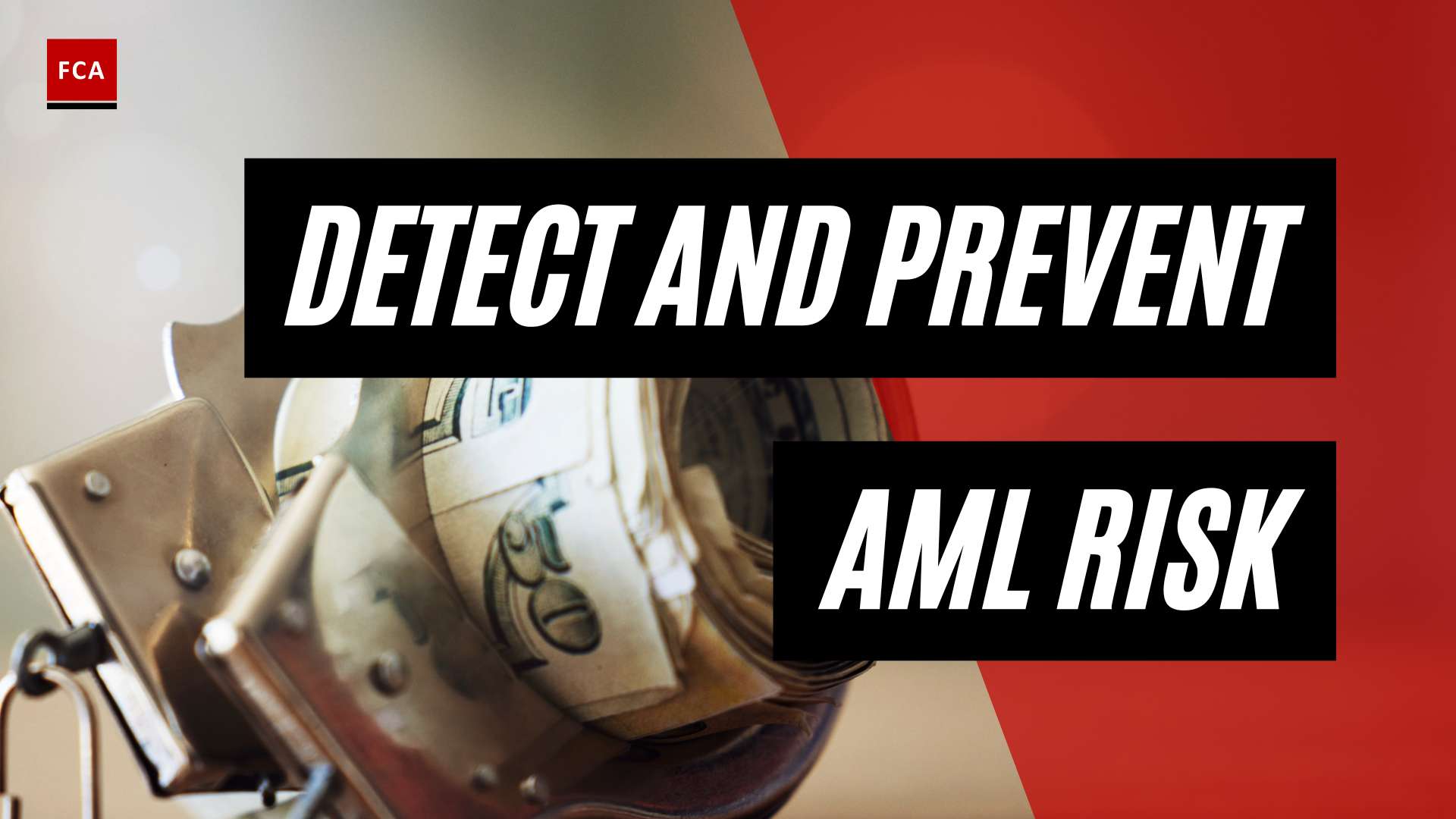Understanding Real Estate Money Laundering
In the realm of financial crime, money laundering through real estate has emerged as a significant problem. This method of illegal activity involves the use of property transactions to conceal, disguise, or legitimize illicit funds.
Defining Money Laundering in Real Estate
Money laundering through real estate refers to the process of integrating illicit funds into the legal economy by purchasing real estate properties. This method provides the launderer with a seemingly legitimate asset and a plausible explanation for their wealth. The Organisation for Economic Co-operation and Development (OECD) has highlighted real estate as a prevalent way to hide money, with a report by Global Financial Integrity revealing that over $2.3 billion was laundered through US real estate between 2015 and 2021 (ComplyAdvantage).
Indicators of money laundering in real estate include under- or over-valuing of property value, rapid successive buying and selling, use of third parties or companies to distance the transaction from the criminal source of funds, participation by lawyers, accountants, and real estate agents in money laundering, cash from criminal sources, and private sales.
High-Risk Countries and Cities
Certain countries and cities are recognized as hubs for money laundering through real estate. These include the United States, the United Kingdom, Australia, Canada, and Germany, with focal points in cities like London, Toronto, Vancouver, and New York (ComplyAdvantage).
One noteworthy case involved a Honduran official laundering money through property purchases in New Orleans, while another saw the Vatican investing $350 million in London real estate. In the UK, Transparency International reported that £1.5bn of property, primarily in London, was acquired by Russians accused of corruption, including 2,189 firms in the UK and its territories involved in 48 Russian money laundering cases amounting to over £82 billion (ComplyAdvantage).
In the European Union, real estate money laundering was estimated to be between 1% and 30% of GDP by the European Parliament’s Special Committee on Financial Crimes, Tax Evasion, and Tax Avoidance (European Parliament).
To combat these threats, countries such as the US and Canada have implemented real estate money laundering regulations and regularly conduct real estate money laundering investigations. However, challenges persist due to the complex nature of these crimes and the constant evolution of real estate money laundering methods. Understanding these methods and the high-risk areas for such activity is crucial for professionals working in compliance, risk management, and anti-financial crime.
Techniques Used in Real Estate Money Laundering
Money laundering through real estate is a complex crime that involves various techniques to hide illicit gains. These techniques often exploit loopholes in the real estate sector, making detection and prevention challenging. Let’s explore some common tactics used in real estate money laundering.
The Loophole of All-Cash Transactions
In real estate transactions, the use of cash can often serve as a red flag for potential money laundering activities. Cash transactions could be indicative of a desire to avoid financial institutions that are required to report transactions above certain thresholds to regulatory authorities.
Criminals commonly exploit all-cash transactions in real estate, given that property professionals are not mandated to verify identities or report suspicious activities. An estimated third of US property sales were cash-financed, leading FinCEN to expand Geographic Targeting Orders (GTOs) to curb such practices (ComplyAdvantage).
Use of Shell Companies and Nominees
The use of shell companies and nominees is another common technique employed in money laundering through real estate. This method involves using a third party or a shell company to buy property on behalf of the criminal, thereby distancing the criminal from the illicit funds and reducing the risk of detection by authorities (First AML).
This method effectively conceals the true owner of the property and makes it difficult for authorities to trace the source of the funds. This anonymity provided by shell companies and nominees is a significant obstacle in the fight against money laundering in real estate.
Rapid Property Flipping
Rapid property flipping is another technique used to launder money through real estate. This process involves purchasing a property and rapidly reselling it multiple times to create the appearance of legitimate real estate transactions.
This method, commonly known as “property flipping,” can be used to inflate property values artificially and to move illicit funds quickly through the real estate market. Each subsequent sale gives the appearance of a legitimate transaction, effectively “cleaning” the illicit funds.
Understanding these techniques is crucial for professionals working in compliance, risk management, and anti-money laundering. Recognizing these tactics can aid in the detection and prevention of money laundering activities in the real estate sector. For more information on this topic, you can explore our articles on real estate money laundering regulations, real estate money laundering investigations, and real estate money laundering prevention.
Impact of Money Laundering on Real Estate
The adverse effects of money laundering through real estate are far-reaching, affecting not just the real estate market, but the economy as a whole. This section will explore two significant impacts: the inflation of property prices and the threat to market stability.
Inflation of Property Prices
Money laundering can artificially inflate property prices, making homes unaffordable and increasing the risk of investment losses when criminals move their operations to other markets. Criminals often engage in property price manipulation in real estate transactions as another method for laundering money. This tactic involves paying a higher or lower price for a property than the market value.
Real estate provides ample opportunities for money launderers to legitimize their funds due to the potential for an increase in property value, further disguising the origins of illicit funds (NAR). This price manipulation and the subsequent artificial inflation can lead to a housing market that is unattainable for average homebuyers and destabilizing for investors.
Threat to Market Stability
Money laundering in real estate is a significant threat to market stability. The injection of illicit funds into the housing market can distort demand and supply dynamics, leading to price volatility and market instability.
Furthermore, money launderers often use sophisticated real estate money laundering schemes, such as using legal entities to conceal the actual ownership of property, exploiting shell companies, or using the sector for illicit financial flows. These actions can undermine the transparency and integrity of the real estate market.
When criminals move their operations to other markets, the sudden withdrawal of these illicit funds can cause a sharp decline in property prices, leading to market crashes and financial crises. This instability can deter genuine investors, leading to a loss of faith in the real estate market’s reliability and a slowdown in economic growth.
Efforts to combat money laundering in real estate are therefore crucial, not only from a legal and ethical standpoint but also to ensure the stability and sustainability of the real estate market. For more information on this, refer to our articles on real estate money laundering regulations and real estate money laundering prevention.
Regulatory Measures Against Money Laundering
Given the seriousness of money laundering through real estate, regulatory bodies worldwide have been working on measures to tackle this issue. These measures aim to increase transparency in real estate transactions and strengthen the overall anti-money laundering framework within the real estate sector.
Geographic Targeting Orders
Geographic Targeting Orders (GTOs) are one such regulatory measure aimed at curbing money laundering practices in the real estate sector. Criminals often exploit the loophole of all-cash transactions in real estate, given that property professionals are not required to verify identities or report suspicious activities. In response, FinCEN has expanded GTOs to notify them of certain real estate transactions, which can help in the fight against money laundering through real estate.
A proposed rule includes the further expansion of the GTOs to cover more real estate transactions. This initiative is significant in combatting money laundering through real estate and aims to strengthen the overall anti-money laundering framework within the real estate sector (Federal Register).
Reporting Requirements for Property Professionals
In addition to GTOs, the authorities have proposed enhancing the reporting requirements for property professionals to address the potential misuse of nominees or shell companies in real estate transactions, which often obscure the true owners and facilitate money laundering (Federal Register).
The Financial Crimes Enforcement Network (FinCEN) requires certain real estate professionals to comply with anti-money laundering (AML) regulations. These regulations aim to increase transparency in real estate transactions and mitigate the risks associated with money laundering through the real estate sector.
FINTRAC also emphasizes that reporting suspicious financial transactions related to real estate is a critical part of the financial intelligence system. This enables them to detect, deter, and prevent money laundering and terrorist financing activity. Failure to report suspicious transactions can result in serious civil or criminal penalties.
The proposed rule also suggests imposing obligations on non-bank residential mortgage lenders and originators to detect and prevent money laundering activities in real estate transactions. This would further expand the coverage of anti-money laundering efforts in the real estate market.
These regulatory measures are vital in the fight against money laundering through real estate. However, the effectiveness of these measures will largely depend on the commitment and cooperation of all stakeholders in the real estate sector, including property professionals, financial institutions, and regulators.
Case Studies of Money Laundering in Real Estate
To better understand the issue of money laundering through real estate, it’s helpful to examine specific case studies. These examples, from various countries, demonstrate the complexities and challenges associated with detecting and preventing this type of financial crime.
Money Laundering Cases in the US and UK
Money laundering through real estate is a significant issue in both the United States and the United Kingdom. The Global Financial Integrity report revealed that over $2.3 billion was laundered through US real estate between 2015 and 2021 (ComplyAdvantage). A notable case involved a Honduran official who laundered money through property purchases in New Orleans.
In the UK, Transparency International reported that £1.5bn of property, primarily in London, was acquired by Russians accused of corruption. They also discovered 2,189 firms in the UK and its territories involved in 48 Russian money laundering cases, amounting to over £82 billion.
The Vatican’s significant investment of $350 million in London real estate is another high-profile case, illustrating the global scale and reach of money laundering through real estate. For more examples of money laundering in real estate and the methods used, see our article on real estate money laundering methods.
Money Laundering Cases in Australia and Canada
Australia and Canada also face significant challenges with money laundering in the real estate sector. The Australian Transaction Reports and Analysis Centre (AUSTRAC) estimated that in 2020, Chinese interests alone laundered more than $1 billion through Australian real estate. The Australian Federal Police (AFP) stated that of the $187 million in assets seized in the 2021 financial year, $116 million was in real estate assets.
Meanwhile, in Canada, the Financial Transactions and Reports Analysis Centre of Canada (FINTRAC) reported that over a 10-year period, approximately 5 million sales took place through Multiple Listing Services (MLS) involving around 100,000 brokers and sales representatives. However, during the same period, FINTRAC received only 127 suspicious transaction reports related to real estate brokers, agents, or developers, and 152 reports from other types of reporting entities involved in real estate transactions (FINTRAC).
These cases highlight the scale of money laundering in the real estate sector and the need for stronger anti-money laundering regulations and controls. For more information on the steps being taken to combat money laundering in real estate, see our article on real estate money laundering regulations.
Future Directions in Anti-Money Laundering
As the understanding of money laundering through real estate deepens, the focus shifts to reinforcing regulatory measures and the role of financial institutions in combating these illicit activities.
Proposed Anti-Money Laundering Regulations
In response to the increasing scrutiny on real estate transactions as a conduit for money laundering, new anti-money laundering regulations are being proposed. The Financial Crimes Enforcement Network (FinCEN) is seeking feedback on these regulations, aiming to close loopholes that currently allow illicit actors to launder money through real estate transactions.
One of the significant changes includes the expansion of the Geographic Targeting Orders (GTOs) to require certain real estate transactions to notify FinCEN. This would assist in identifying and tracking potential money laundering activities.
Further, the proposed rule aims to increase transparency in transactions involving shell companies or nominees. Enhanced reporting requirements will make it more challenging for illicit actors to obscure the true owners of properties, thereby hindering their money laundering efforts.
The proposed rule also considers the imposition of obligations on non-bank residential mortgage lenders and originators. This expansion of coverage aims to detect and prevent money laundering activities in real estate transactions, strengthening the overall anti-money laundering framework within the real estate sector.
The Role of Financial Institutions and Regulators
As the proposed anti-money laundering regulations take shape, the role of financial institutions and regulators becomes increasingly significant. These entities are crucial for the successful implementation and enforcement of these regulations.
Financial institutions are on the frontline in the fight against money laundering. They have an important role in identifying and reporting suspicious transactions, which can be critical in the early detection of money laundering schemes.
Regulators, on the other hand, are responsible for ensuring that financial institutions comply with anti-money laundering regulations. They also have the authority to impose penalties for non-compliance.
The European Commission has identified the real estate sector as a high-risk area for money laundering, emphasizing the importance of enhanced due diligence measures in real estate transactions.
In Canada, FINTRAC has raised concerns about the low number of suspicious transaction reports related to real estate brokers, agents, or developers, despite the high volume of real estate transactions. This highlights the need for increased vigilance and reporting in the real estate sector.
The proposed regulations and the active role of financial institutions and regulators are crucial steps towards curbing money laundering through real estate. They represent a renewed commitment to transparency and accountability in the real estate sector, aiming to protect it from the nefarious influences of illicit funds.








